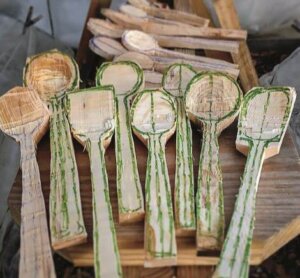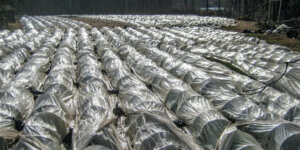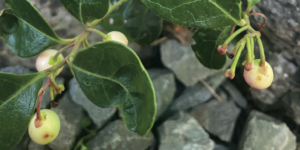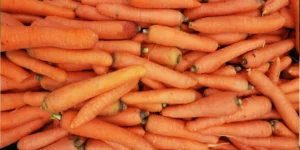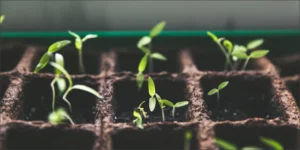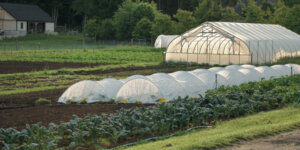The Scoop on Spoon Carving
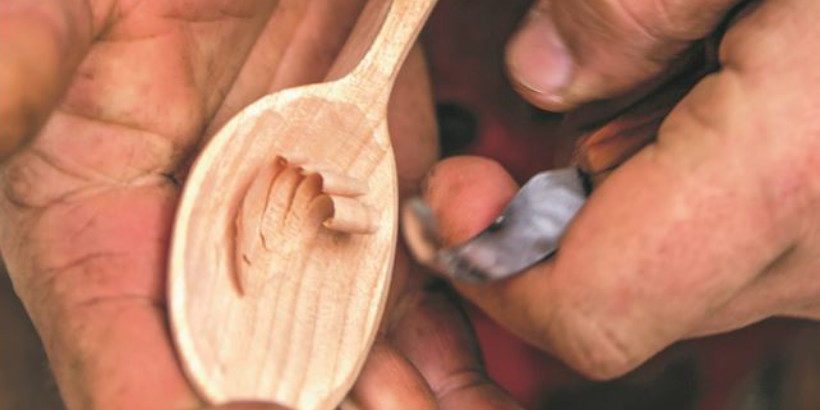
There’s no better time than the present to pick up a new hobby! And with the new year just starting, sticking to a new hobby can be an easy and achievable resolution. One possible new hobby you could try out? Spoon carving.
The following is an excerpt from Carving Out a Living on the Land by Emmet Van Driesche. It has been adapted for the web.
(Spoon Carving. Photo by Meghan Hoagland.)
Another new skill I developed on the farm has given me options on a far greater scale, eventually becoming the biggest part of my professional identity, what I do with most of my time, and what I am known for around the world.
I am talking, oddly enough, about spoon carving. Spoon carving is one of those strange activities that seems so niche that you couldn’t possibly make any money doing it.
On the face of it, that would be correct. However, by leveraging my life and journey through Instagram I have been able to build a business that currently accounts for a quarter of my yearly income, separate from the farm revenue. By next year it will exceed revenue from the farm. Spoon carving allows me to add value to the deciduous trees on the farm, turning them into a resource that I can sustainably harvest indefinitely.
I started carving wooden spatulas during the fall when my daughter was a year and a half old. It was something I could do while keeping a watchful eye on her as she toddled around the yard. I scoured the winter firewood stacked on our porch for straight-grained pieces, split them open, and carved something quickly.
My designs were simple because they had to be. I never knew how much time I had before I needed to change a diaper or tend to a banged-up knee. The wood was dry and hard, my knife was not the greatest, and I leaned heavily on sandpaper to cover up my lack of skill.
The spatulas sold, however, first at the fall festival in town and later at the grove during the tree season. I sold them for $10 each, not a great hourly rate but not awful either, and the money reinforced my desire to do something concretely productive during the mornings or afternoons I had with her.
I didn’t carve the entire time, but if I made just one thing I could point to and tell myself I had contributed something concrete to the day, something creative, it alleviated some of the exhaustion that comes from being the parent of very young children.
When I look back at those spatulas now I cringe because I knew so little about carving, but I also feel pride, because I recognize that I treated carving like part of the farm business right from the start. Over the years, my skill as a carver has increased dramatically, but that same attitude prevails, as does the desire to make objects that are both functional and beautiful.
Recommended Reads
Recent Articles
Want to grow year-round, but a greenhouse feels like a big investment? When it comes to cost and flexibility, low tunnels are the all-around winners.
Read MoreWintergreen is the stunning evergreen groundcover that’s a game-changer for your garden! It’s cherished for its aromatic leaves, vibrant fall color & bright berries.
Read MoreGrow winter carrots for a sweeter & more flavorful harvest! Ditch the bland, store-bought carrots this winter! Grow your own winter carrots for a sweeter and more flavorful twist 🥕🥕
Read MoreSearching for the perfect book to give the homesteader in your life? We’ve got your go-to books for anyone interested in organic growing, permaculture, soil health, year-round growing & more! What’s their next great read?
Read MoreWinter is coming… but that doesn’t mean you should put away those tools just yet. Extend the growing season well past the first frost!
Read More

